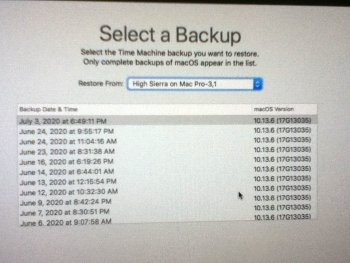Hi
Unfortunately downgrading is not as easy as upgrading the OS.
It is though very well possible, and may look more complicated than it is.
If you follow these steps you'll succeed:
1-make a TimeMachine backup of your data on another (external) disc.
2-make a bootable installer of High Sierra on e.g. a usb (thumb) drive of 8GB minimal :
-download the latest HS here:
https://support.apple.com/nl-nl/HT208969
look under #4: download HS
-how to make a installer:
Use an external drive or secondary volume as a startup disk from which to install macOS.

support.apple.com
(terminal can be found here: applications>utilities>terminal)
After successfully make a usb installer shut the iMac off and:
3-plug the installer in, start up and hold the "option" key while the iMac boots, you'll see the HDD and the installer choose the installer(press > or <) and press enter.
4-once the installer is loaded,erase the internal HDD from Disc Utilities choose GUID partition and HFS+ as the format (Mac OS extended journaled)
5-install HS on the internal HDD. After the install OS will ask if you want to recover from a TM backup: choose NO.
6-after checking the clean install works fine, go to App Store and install available updates of HS,restart and:
7- plug in the TM backup, go to applications>utilities>immigration assistant and choose to recover from TM.
This way you'll have a clean HS install with all your data.
EDIT:
is it worth the effort of down grading
Yes, the original HDD performs worse with the format necessary to install Mojave.



